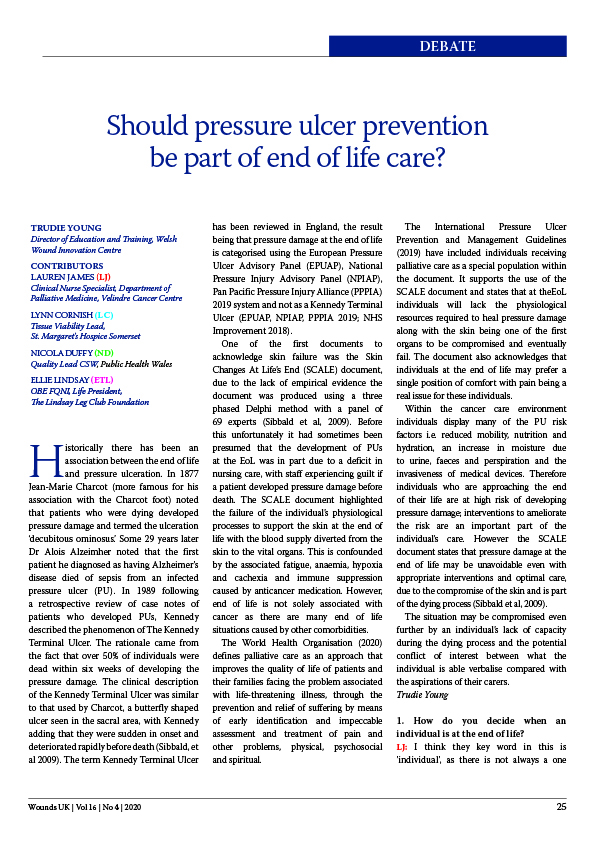Historically there has been an association between the end of life and pressure ulceration. In 1877 Jean-Marie Charcot (more famous for his association with the Charcot foot) noted that patients who were dying developed pressure damage and termed the ulceration ‘decubitous ominosus’. Some 29 years later Dr Alois Alzeimher noted that the first patient he diagnosed as having Alzheimer’s disease died of sepsis from an infected pressure ulcer (PU). In 1989 following a retrospective review of case notes of patients who developed PUs, Kennedy described the phenomenon of The Kennedy Terminal Ulcer. The rationale came from the fact that over 50% of individuals were dead within six weeks of developing the pressure damage. The clinical description of the Kennedy Terminal Ulcer was similar to that used by Charcot, a butterfly shaped ulcer seen in the sacral area, with Kennedy adding that they were sudden in onset and deteriorated rapidly before death (Sibbald, et al 2009). The term Kennedy Terminal Ulcer has been reviewed in England, the result being that pressure damage at the end of life is categorised using the European Pressure Ulcer Advisory Panel (EPUAP), National Pressure Injury Advisory Panel (NPIAP), Pan Pacific Pressure Injury Alliance (PPPIA) 2019 system and not as a Kennedy Terminal Ulcer (EPUAP, NPIAP, PPPIA 2019; NHS Improvement 2018).






